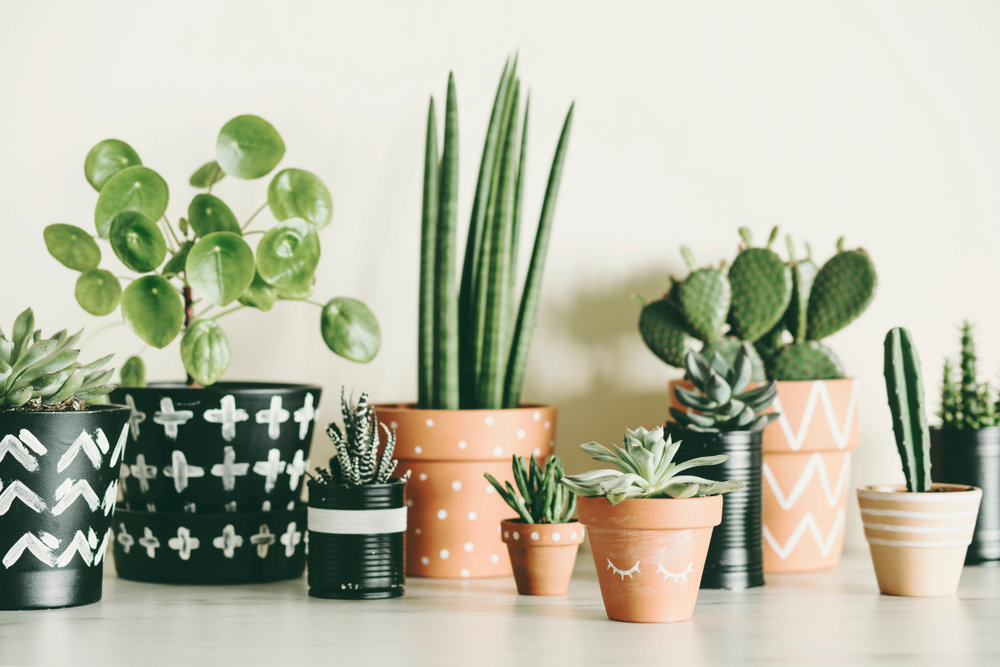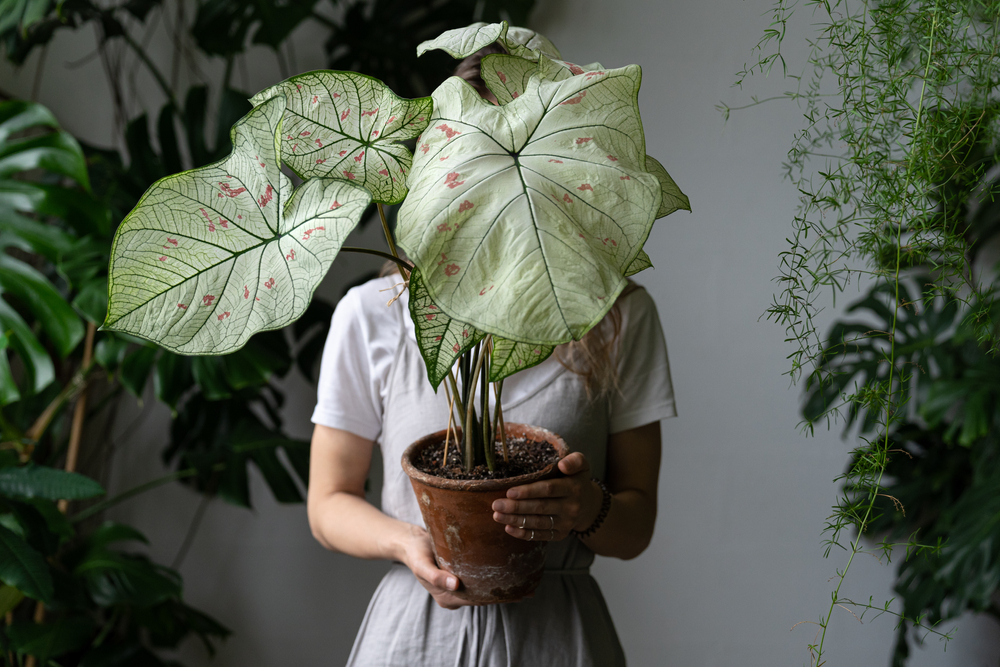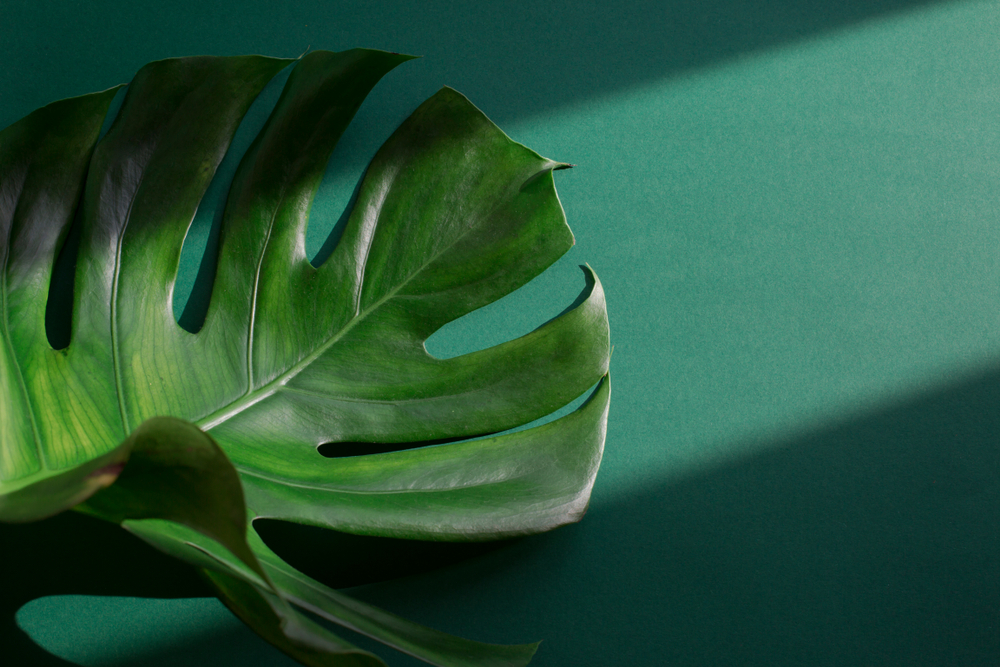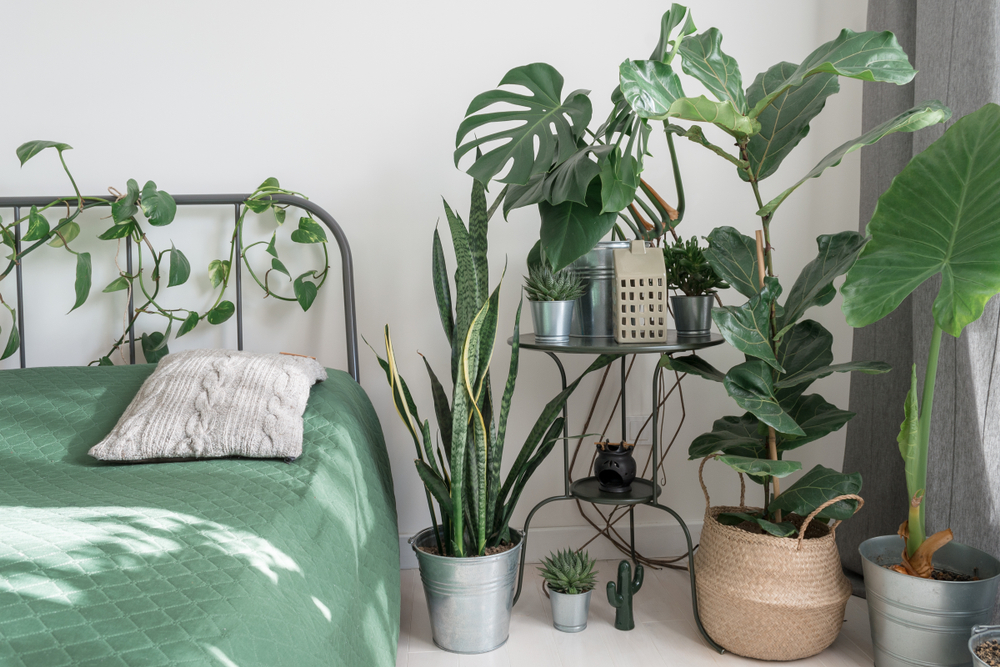How to care for your Houseplants
The most important part of caring for your plants is regulating light, temperature, and water.
Most tropical plants thrive in a bright room with direct sunlight. They can also be kept in shaded areas with indirect sunlight. If you have an office space with fluorescent lights or under-counter lighting, that's enough. Many plants will survive with only a few hours of sun a day.
When it comes to watering, don't overwater! Ensure the plant is watered thoroughly, but ensure that excess water drains out from the pot before giving it more water. You want to keep the roots from getting too saturated as they might start to rot away. Plants need less water in colder months because they are dormant during this time of year. They will require more water in warmer months because they are growing more quickly.
To keep your plants looking their best, you will have to do some work on them regularly: trimming leaves and stems, fertilizing and repotting (which should be done every couple of years).
What is the right soil type for my houseplants?
The ideal soil for your houseplants depends on the pH that makes them thrive. For most plants, a slightly acidic to neutral range works best. That's why most indoor potting mixes contain peat moss and other soilless mediums such as coconut fiber. After choosing the right indoor potting mix, it's important to fertilize the soil for the right amount of nutrients. We're happy to give you an advice based on the houseplants you have, so feel free to ask us any of your questions.
How to repot a plant?
Uppotting a plant may include changing the pot, but it can also just be a change of the soil. Fresh soil means new nutrients! How to repot a plant?
- Gently remove your plant from its pot.
- Massage the root ball until the roots loosen from their coils.
- Fill a third of the new pot with potting soil
- Place the plant in the new pot
- Add soil until the pot is full, and gently pat it down
- Water the plant very well...
- ... and you're done!
How to water houseplants?
For most plants counts that if the soil feels dry, it's time to water them. There are different rules of thumb for various plants throughout the season, so keep in mind that for some plants a dryer soil is beneficial, where other plants benefit from a more moisture soil.


How big will my houseplant get?
Some plants may seem to grow bigger and bigger overnight, while others don't seem to grow a bit in a long time. That's because all plants have their own pace and characteristics. Not every plant is meant to become a statement piece in your interior. Do you want to find out the adult size of a plant you're considering buying? Usually, plant labels display the pace at which the plant grows or the maximum size of the plant. This information helps you to pick the right plant for your wishes. Keep in mind that the maximum size is related to the optimal amount of nutrients, watering and light.
What are low maintenance houseplants?
Do you want to create an urban jungle without too much effort? Are you just starting to love houseplants, but not too sure if you can give them the right care? Some plants are just very modest in their wishes and needs, so you can sit back and enjoy! Some of our favorite low maintenance houseplants are:
- Prayer Plant (Maranta leuconeura)
- Fiddle Leaf Fig (Ficus lyrata)
- Spider Plant (Chlorophytum)
- Peace Lily (Spathiphyllum)
- Snake Plant (Sansevieria)
Why is my plant not growing well in winter?
Many houseplants grow slowly in winter, just because it's not their growing season. That's why many of them don't need any fertilizer. Tropical plants could be growing as actively in winter as they would in summer, so if they are not growing well, you could consider some of the following options:
- Location: due to fewer hours of sunlight, you might need to relocate your plants to a brighter spot.
- Inside temperatures: consider the temperature at the location where your plants currently are. Is there a radiator or fireplace nearby that causes heat? Or the opposite, is there a source of cold air coming through a window? These are fluctuations that the plants won't really appreciate.
- Watering: sometimes the soil dries out faster during the winter, but that doesn't necessarily mean that the plant needs more water. Pay attention to the humidity and watering needs of your plants, so an overkill of water doesn't harm the plant's growth.


How to pick a pot for my houseplant?
We all know that the right combination of a house plant in a trendy pot gives your interior that little extra touch. However, the right pot for your houseplants is not only the one that matches with your interior, but also with the plant's needs. What are important factors when you choose a new pot for your plants?
- The size: for plants that are growing in pots of 10 inches in diameter or less, you can increase the pot size by 1 or 2 inches in diameter. For larger plants, growing in pots greater than 10 inches in diameter, increase the pot size by 2 or 3 inches in diameter.
- Drainage: it's very important to choose a pot with drainage holes, so the potting soil doesn't stay too wet after watering. If you prefer to choose a pot without drainage holes, you can hide a smaller container inside, with holes. You can plant your houseplant in this smaller container inside (make sure this smaller container is the right size for the plant). Keep in mind to empty the excess water, which will leak into the bigger pot.
